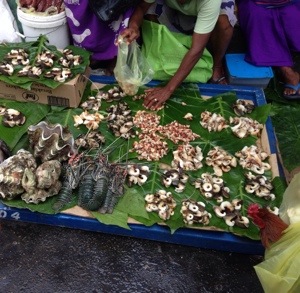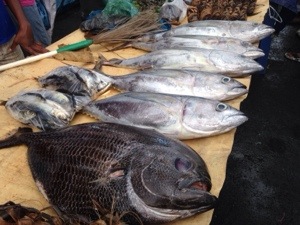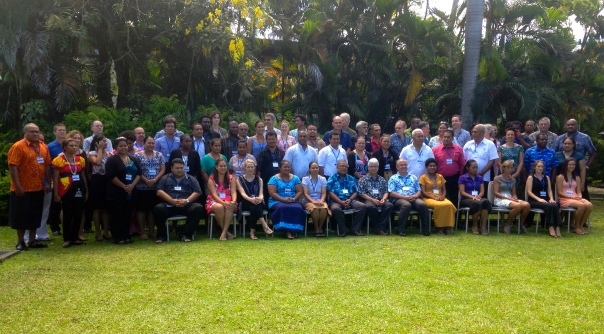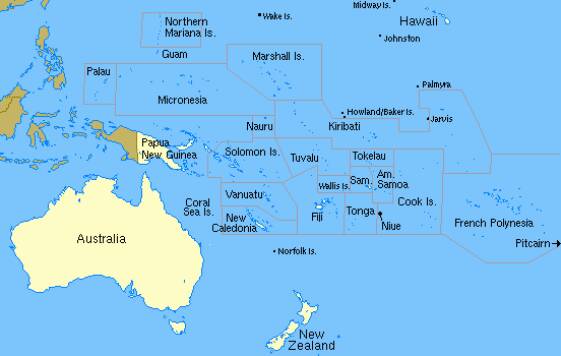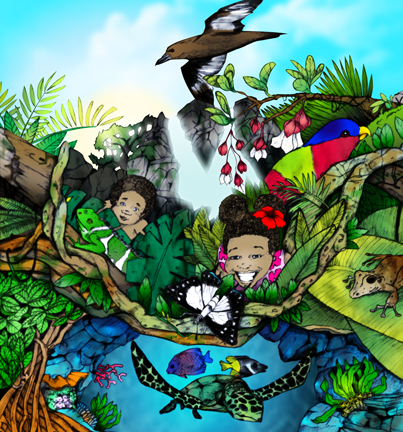I was asked by a few people at the Marine Spatial Planning workshop in Suva over the past week to post a few updates on my blog (the original articles I wrote appear on the Secretariat of the Pacific Regional Environment Program website)
What is Marine Spatial Planning, you might ask? Many attendees did this week and among many complex definitions I heard this was the easiest to comprehend: “It is the process of analysing and making recommendations on the distribution of human activities affecting coastal and marine areas. A key goal is to balance ecological, economic, social and cultural objectives.”
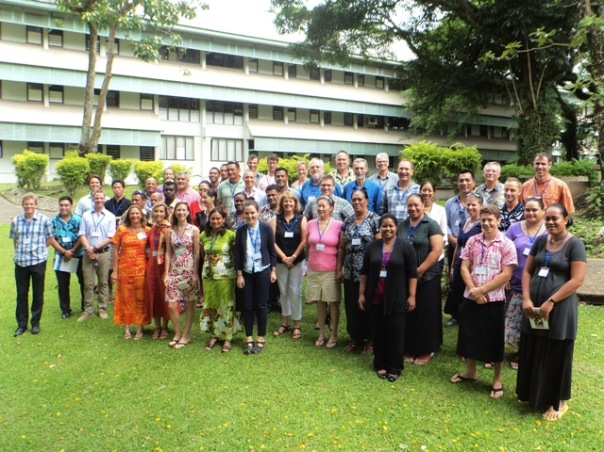
Attendees at the Marine Spatial Planning workshop, Suva, Nov 2013
26 November 2013, Steve Pogonowski, Marine Spatial Planning, Suva Fiji – Marine spatial planning will become ever more vital as the Pacific islands and territories deal with the impacts of rising sea levels, ocean acidification and ocean warming, attendees at a workshop at the University of the South Pacific in Suva, Fiji, heard yesterday.
The second day of the Marine Spatial Planning workshop looked at climate change and other challenges to central and west Pacific countries and territories, case studies of marine spatial planning across the region and new projects being brought in to assist cross-boundary planning.
Attendees on the second day represented organisations in countries and territories including Wallis and Futuna, Solomon Islands, Tuvalu, French Polynesia, Micronesia and Samoa.
Sangeeta Mangubhai, Senior Programme Officer for IUCN Oceania Regional Office, said she hoped participants would all gain a greater understanding of initiating and carrying out good marine spatial planning.
“One of the things I really liked was listening to the case studies and also hearing some of the regional efforts being made to support countries if they decide to implement marine spatial planning from coastal waters out to their EEZ (Exclusive Economic Zone),” she said.
“Especially for our Pacific Island participants – and there are some here representing their governments – I hope they can gain a real understanding of marine spatial planning is and the role it can play in managing the valuable resources in their countries to achieve the ecological, social and economic outcomes that they want.
“If they undergo a marine spatial planning process, they now realise there are experts and experiences in this region that they can tap into to get support and assistance.”
Discussion topics included the success of Locally Managed Marine Areas in involving communities in conservation; how data collection on tuna fishing can track the effects of climate change; and the importance of local socioeconomic, governance and ecological issues in cross-boundary planning.
François Gauthiez from the French Marine Protected Areas Agency (AAMP) said the workshop had also generated interesting discussions on various software tools and how they can be used to present data simply to help island communities develop their fishing and conservation plans for the future.
